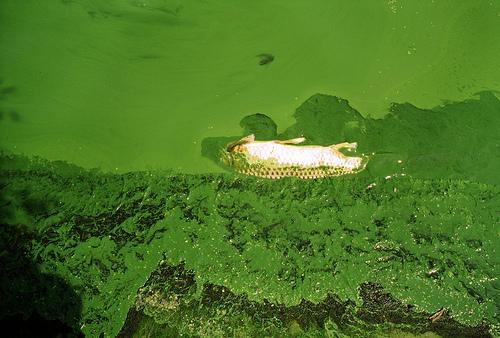
The toxic algae bloom spreading from southern California to Alaska, is thought to be the largest ever recorded.
It is more widespread and deeper than scientists feared weeks ago.

BYPASS THE CENSORS
Sign up to get unfiltered news delivered straight to your inbox.
You can unsubscribe any time. By subscribing you agree to our Terms of Use
Latest Video
Scientists believe that the toxic algae bloom could be responsible for poisoning marine mammals across the west coast. It produces a powerful neurotoxin, called domoic acid, that accumulates in small marine life that feed on algae.
The bloom is growing in a giant mass of abnormally warm water, known as “the Blob” and has been positioned off the North American Pacific Coast for several months.
Natural News reports: The algae bloom runs from Southern California to Alaska and possibly even to the Aleutian Islands. It is 40 miles wide and reaches 650 feet deep at some points.
“It’s been incredibly thick, almost all the same organism,” said ocean scientist Raphael Kudela of the University of California-Santa Cruz, noting that the bloom “looks like a layer of hay.”
“It’s definitely the largest bloom of this particular algae seen on the West Coast, possibly anywhere, ever.”
Fisheries collapsing
According to the National Oceanic and Atmospheric Administration (NOAA), the bloom is “laced with some toxic [phytoplankton] species that have had far-reaching consequences for sea life and regional and local economies.” These species, known as Pseudo-nitzschia, produce a highly toxic chemical known as domoic acid.
Toxic algae blooms of this variety, also known as red tides, are well known and relatively common. This particular red tide is not only enormous, but it has also been exceptionally long lasting and still shows no signs of dispersing.
“It’s the longest lasting, highest toxicity and densest bloom that we’ve ever seen,” said Vera Trainer, research oceanographer with the Northwest Fisheries Science Center in Washington state.
Clam, crab, anchovy and sardine fisheries in California, Oregon and Washington have all been closed due to population crashes caused by domoic acid poisoning.
“It’s really working its way into the food web and we’re definitely seeing the impacts of that,” Kudela said. He noted that sea lions and pelicans have been sickened from eating domoic acid-tainted prey.
Researchers are also investigating whether the bloom played any role in killing nine fin whales found dead near Kodiak Island, Alaska, in June. Reports of dead and dying whales, gulls and fish in the Aleutian Islands also have scientists worried that the bloom might have spread to that region.
The wide-reaching effects of the red tide led Grist.org to proclaim that the bloom is “basically eating the West Coast alive.”
Could there be a Fukushima connection?
As in any recent anomalies affecting the Pacific Ocean, some scientists worry that radioactive pollution from the Fukushima nuclear disaster might be playing a role. While the toxic bloom has certainly been linked to the collapse of certain ocean populations, its role in poisoning marine mammals is less clear. A recent study by researchers from the University of Alaska-Fairbanks failed to find any domoic acid in a tissue sample taken from one of the fin whales found dead near Kodiak Island.
The researchers are still investigating other potential causes of the whale deaths, including the possibility that radioactivity from the Fukushima disaster is to blame. The results of a muscle tissue analysis for Cesium 137 — one of the radionuclides released from Fukushima in the greatest quantities — are still pending.
The various causes contributing to the ongoing presence of the ocean Blob also remain poorly understood. FukushimaWatch suggests it could be caused by heating due to radioactive material released into the ocean from the 2011 Fukushima meltdowns.
What is known is that radioactive material is still pouring into the Pacific from the Fukushima site.
“Every day, four hundred tons of highly radioactive water pours into the Pacific and heads towards the U.S.,” physician and renowned anti-nuclear activist Helen Caldicott said in September 2014.
Follow more Fukushima news at FukushimaWatch.com.
Sources for this article include:
http://www.weather.com/science/news/giant-algae-bloom
http://www.capradio.org
http://america.aljazeera.com
http://www.cbsnews.com
http://www.usatoday.com
http://grist.org
http://www.reuters.com
http://bigstory.ap.org
http://seagrant.uaf.edu/news/fishlines/2015/july.php
http://www.alaskapublic.org
http://fukushimawatch.com
http://www.naturalnews.com


